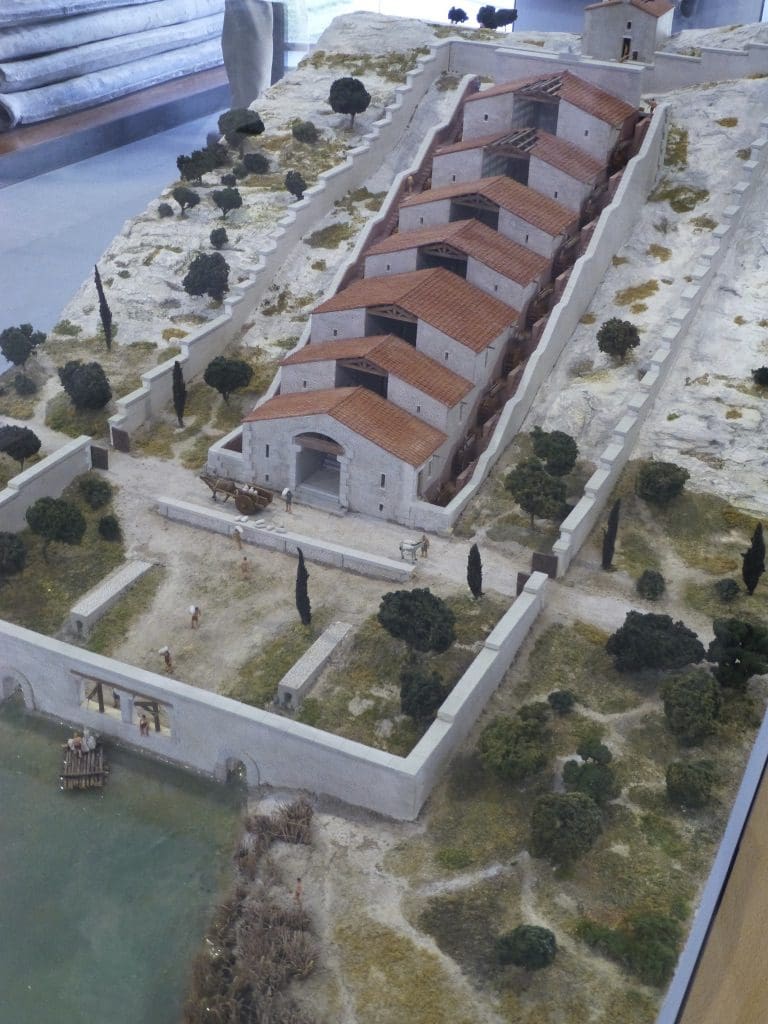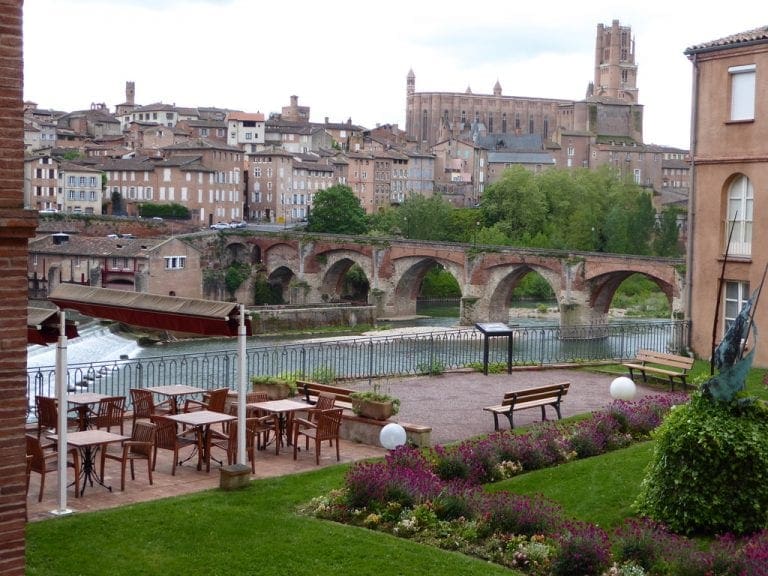I am Barbegal – a Roman watermill
The Barbegal aqueduct and mill is a Roman watermill complex a few kilometres north of Arles. The complex has been referred to as “the greatest known concentration of mechanical power in the ancient world”. The concept was simple, but the application is impressive. Barbegal was an immense flour mill, dating from the 4th century A.D. The power to drive the millstones came from 16 waterwheels, arranged in two parallel rows of eight. Each row ran downhill so that the water dropped from one wheel to the next, driving all eight in turn before running into a drain at the foot of the hill.
Two aqueducts join just north of the mill complex. A sluice enabled the operators to control the water supply to the complex. The capacity of the mills is estimated at 4.5 tons of flour per day, sufficient to supply enough bread for the 6,000 of 30-40,000 inhabitants of Arelate at that time. The mills apparently operated from the end of the 1st century until about the end of the 3rd century.
Present day evidence of multiple mills during the Roman era is rare. The remains of the Berbegal mill and buildings which housed the overshot water wheels are still visible at the site, and it is by far the best preserved of ancient mills. There are substantial masonry remains of the water channels and foundations of the individual mills, together with a staircase rising up the hill upon which the mills are built.
It is thought that the wheels were overshot water wheels with the outflow from the top driving the next one down and so on, to the base of the hill. Vertical water mills were well known to the Romans. The use of multiple stacked sequences of reverse overshot water-wheels was widespread in Roman mines. There were also floating water mills and sawmills.
In her Masters of Rome series, Masters_of_Rome Colleen McCullough has much needed armour made in just such a watermill complex. This one?
















